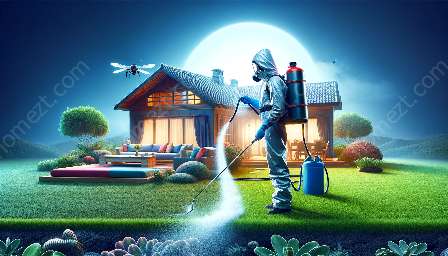Termites are known to cause extensive damage to buildings and wooden structures, making termite control a vital aspect of pest management. As pests, termites are a significant threat to properties, leading to costly repairs and structural damage. Termiticides are the primary means of controlling termite infestations and protecting properties from their destructive behavior. In this comprehensive guide, we will explore the world of termiticides, their role in pest control, and how they are crucial for managing termite populations.
The Challenge of Termites
Termites are small, social insects that feed on wood and other cellulose materials. They live in underground colonies and can quickly establish large populations, making them a formidable pest to contend with. Their ability to remain hidden and elusive often results in termite infestations going unnoticed until significant damage has already occurred.
When left unchecked, termite infestations can compromise the integrity of structures, leading to unsafe conditions and decreased property values. Additionally, the cost of repairing termite damage can be substantial, making prevention and control critical in safeguarding properties from their destructive activities.
The Role of Termiticides
Termiticides are chemical compounds designed to control and eradicate termite populations. These specialized solutions are formulated to be effective in exterminating termites, preventing future infestations, and safeguarding structures from their detrimental impact. Termiticides can be applied in various ways, including soil treatments, baits, and direct applications to infested areas.
By targeting termites at the source, termiticides provide a reliable means of controlling termite populations and protecting properties from their destructive tendencies. Integrated Pest Management (IPM) strategies often include the use of termiticides as a key component in comprehensive pest control programs.
The Science of Termiticides
Modern termiticides are based on extensive research and development, utilizing advanced chemistry to create effective solutions for termite control. These formulations are designed to be environmentally responsible while providing long-lasting protection against termites and minimizing risks to non-target organisms.
Through ongoing scientific advancements, termiticides have become increasingly effective, offering targeted control of termite populations with minimal impact on the surrounding environment. This focus on precision and safety underscores the importance of utilizing termiticides as a sustainable approach to managing termite infestations.
Types of Termiticides
- Repellent Termiticides: These termiticides create a barrier that repels termites, preventing them from entering structures and establishing colonies.
- Non-Repellent Termiticides: These termiticides are undetectable by termites and are designed to be transferred throughout the colony, effectively eliminating the population.
- Baiting Systems: Bait stations containing termiticides are strategically placed to attract and eliminate termite colonies, offering a targeted approach to control infestations.
By understanding the characteristics and applications of different termiticides, pest control professionals can tailor their approach to effectively manage termite infestations and provide long-term protection for properties.
Professional Application of Termiticides
Due to the specialized nature of termiticides and the technical expertise required in their application, professional pest control services are often enlisted to implement termiticide treatments. These professionals possess the knowledge, training, and equipment necessary to apply termiticides effectively, ensuring comprehensive coverage and optimal results.
Working with a reputable pest control company can provide property owners with peace of mind, knowing that their structures are being safeguarded by expertly applied termiticides. Additionally, regular maintenance and inspections may be recommended to uphold the efficacy of termiticide treatments and address any emerging pest control concerns.
Conclusion
The utilization of termiticides is integral to effective termite control and pest management. By leveraging the advancements in termiticide technology and the expertise of pest control professionals, property owners can proactively address termite infestations and protect their assets from the damaging effects of termites. Understanding the role of termiticides in pest control equips individuals with the knowledge needed to make informed decisions regarding the protection of their properties and the mitigation of termite-related risks.




















































